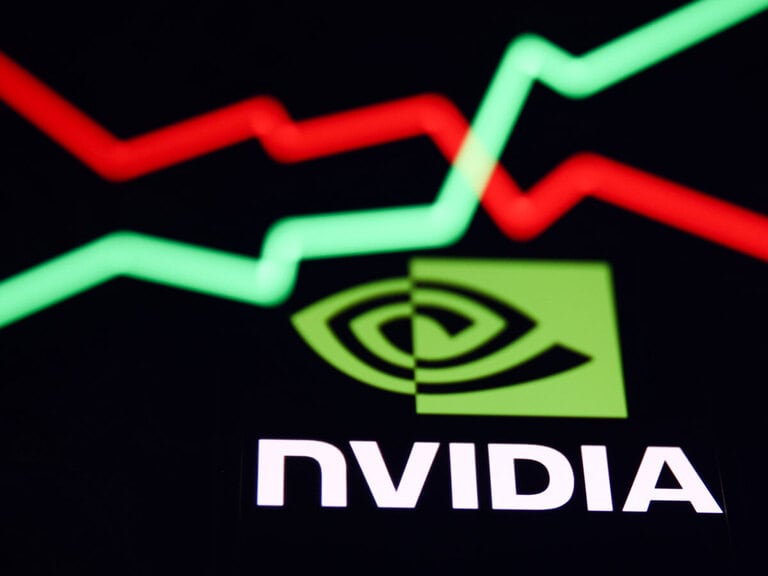Here's our pick of the top three economic and company events in the week commencing Monday 27 November:
EasyJet full-year results
Tuesday 28 November: Shares of easyJet fell sharply in October after the budget airline reported its Q4 results, though the decline was largely due to broad-based negativity across stock markets. In fact, easyJet’s numbers were decent. Evidence of this can be seen in the shares’ recent rebound. Since dropping to a 10-month low of 350p on 23 October, easyJet shares have rallied back above 400p. The airline’s results showed a return to profit for the year, with headline profit before tax estimated to be between £440m and £460m, slightly below consensus forecasts. While a tad disappointing, it’s still a vast improvement on last year. Mind you, the figure pales into insignificance when compared to Ryanair, which smashed forecasts when it reported that it expects to post a full-year profit of between €1.85bn and €2.05bn, and pay a dividend. This is the standard by which easyJet is being judged, even as its performance improved in the second half of the year. EasyJet said it expects to post a record performance for Q4, with an estimated headline profit before tax of between £650m and £750m. That could lift second-half profits to between £850m and £870m, the company said. The company’s package holiday division, easyJet holidays, continued to add value, delivering an estimated annual profit before tax of £120m. Other areas also performed well during Q4, with revenue per seat up 9%, ancillary yield per passenger up 14%, and a load factor of 92%. On guidance for Q1, capacity was said to be up 15% from last year, while the airline also announced a big order of 157 new aircraft from Airbus worth $20bn, with an option for 100 more. The airline said it expects to be able to generate £1bn in profits by 2026.
US core PCE price index (October)
Thursday 30 November: The October reading of the US consumer price index (CPI) showed that the annual rate of inflation had slowed to 3.2%, down from 3.7% in September. Meanwhile, core CPI, which strips out volatile items such as food and energy, eased to 4% in October, down from 4.1% a month earlier. Against a backdrop of falling inflation, bets on a Federal Reserve interest rate hike in December were pared back sharply. Notably, there was a similar slowdown in ‘supercore’ inflation, which measures services excluding energy and housing costs. If we see a disinflationary trend continue to play out in the core personal consumption expenditures (PCE) price index, the Fed's preferred measure of inflation, it will become increasingly difficult for the Fed to quash the idea that rate cuts are coming next year. In the year to September, the US core PCE price index, rose by 3.7%, down from August's downwardly revised 3.8%. Economists' estimates suggest core PCE fell to 3.5% in October. In the face of slowing inflation, the Fed’s key challenge will be to rein in market expectations of rate cuts and reinforce the ‘higher for longer’ mantra that has tightened financial conditions over the past few months.
Eurozone flash CPI (November)
Thursday 30 November: Euro area inflation eased to 2.9% in the year to October, down from 4.3% in the previous month. As inflation falls, market participants are revising their estimates of when the European Central Bank might cut interest rates. While some ECB policymakers have stressed that they expect rates to rise further, there is a growing caucus on the governing council that is urging caution. However, it seems the hawks can jawbone further rate hikes as much as they like – the markets simply aren’t buying it. And while policymakers may claim they aren’t thinking about rate cuts yet, the markets most certainly are. Many investors are betting that the ECB will be the first major central bank to cut rates, possibly as early as Q1 next year. Eurozone flash CPI for November is expected to tick lower to 2.8%, while core CPI is forecast to slow to 3.9%, down from 4.2% a month ago.
Here's our pick of the rest of the week's major economic and company events:
US Q3 GDP (second estimate)
Mon 27 Nov: In October, the first estimate of US third-quarter GDP came in well above expectations at 4.9%, the biggest gain since 2021, with consumer spending up 4%. Bumper growth alongside falling inflation – the core PCE price index eased to 2.4% in Q3 – gave the markets a ‘goldilocks’ scenario, prompting optimism that the Fed’s tightening cycle may have come to an end. The US economy’s strong growth in Q3 wasn’t a surprise, given that the period featured solid retail sales, low unemployment and robust wage growth. That said, Q4 is likely to bring a slower rate of economic growth, even though growth held up reasonably well in October and November. The second estimate of Q3 GDP isn’t expected to significantly alter the picture.
UK mortgage approvals, consumer credit (October)
Wed 29 Nov: The number of mortgage approvals slowed in the final months of last year, hitting a low of 39,900 in January this year as interest rates increased, weighing on demand for mortgages and sending property prices lower. Although mortgage approvals picked up in subsequent months, increasing to a year-to-date high of 54,600 in June, it’s been downhill since then. Further increases in interest rates over the summer contributed to a drop in mortgage approvals, with just 43,300 in September. While UK interest rates have stabilised, mortgage rates have come down from the summer highs, potentially providing some respite to the housing market. However, recent housing data suggests that potential buyers are still holding off on house purchases. Meanwhile, net consumer credit remained steady, coming in at £1.4bn in September, a similar level to previous months, suggesting that consumers are continuing to add to their debt levels to get by.
Birkenstock Q3 results
Wed 29 Nov: Sandal maker Birkenstock endured a flat-footed IPO on 11 October. After listing at $46 a share, the stock fell 12% on the opening day to $36. Since then, however, the shares have trended upwards, edging towards current levels just under $42. Timing is everything when it comes to IPOs and, unfortunately for Birkenstock, it arrived just in time for a sharp sell-off in October. One thing in its favour is that the business is profitable. Total revenue in 2022 came in at $1.35bn, with net income at $202.8m. When the accounts were released prior to the IPO, revenue for the nine months to June were estimated to be $1.2bn and on course to beat last year’s figure. And the IPO wasn’t all bad news. The money raised by the floatation has allowed the company to repay $550m in loans, reducing its total debt to €1.31bn.
Foot Locker Q3 results
Wed 29 Nov: Back in August Foot Locker shares plunged to a 10-year low of just under $15 as the company slid to a Q2 loss of $0.05 a share and fell short on revenue at $1.86bn. Inventory levels came in higher than expected, with signs of softening demand in July. The retailer also slashed its full-year profit outlook from between $2 and $2.25 to $1.30 and $1.50, and paused the dividend. Since then the shares have rebounded, helped by stronger numbers from sector peers like Nike and JD Sports, who own the Finish Line brand in the US. For Q3, revenue is expected to come in at $1.97bn while same-store sales are expected to decline by 9.7%. Profit is forecast to plunge from $1.27 a share to $0.26 a share.
Snowflake Q3 results
Wed 29 Nov: The Snowflake share price has risen 10% since the end of September as the business has slowly improved quarterly revenues. In Q2, revenue came in at $674m, above forecasts, while profit came in at $0.22 a share. For Q3, the company guided revenue of between $670m and $675m, but the figure is likely to come in higher at $713m due to increased demand for cloud-based computing solutions. Quarterly profit is expected to come in at $0.16 a share.
Dr Martens half-year results
Thu 30 Nov: Shares of shoe manufacturer Dr Martens are down more than 40% year to date. The year began badly after the company issued a profit warning in January. Markets stuck the boot in, sending the shares down by a third. Since then the shares have drifted even lower, falling to new record lows in November. The company blamed supply chain issues in the US, which it said reduced wholesale revenues by £15m to £25m and EBITDA by around £20m. For the full year, the company says it expects to see EBITDA in the region of between £ 250m and £260m, below estimates of £285m. In June the company reported full-year revenues of £1bn, but net profit fell short of the £140m estimate, coming in at £128.9m. This was due to a £3.9m impairment charge, as well as a £10.7m hit in relation to forex effects on euro bank debt. Looking forward, the company needs to resolve supply chains issues and reverse the decline in profitability. Half-year revenue is forecast to come in at £414m, with a stronger performance expected in the second half. Adjusted EBITDA for the first half of the year is expected to come in at £62.8m.
Manufacturing PMIs (November)
Fri 1 Dec: Purchasing managers’ index (PMI) readings in Europe continue to look weak. Manufacturing activity in Germany and France has been stuck firmly in contraction territory for the last 16 months. Manufacturing activity in Spain and Italy has been slightly better, but remain fragile. Last week, Germany’s manufacturing PMI print edged up from 40.8 to 42.3, while France’s reading slipped from 42.8 to 42.6. As for Italy and Spain, October prints showed declines to 44.9 and 45.1, respectively, indicating the stifling effect that higher interest rates are having on economic activity.
INDEX DIVIDEND SCHEDULE
Dividend payments from an index's constituent shares can affect your trading account. View this week's index dividend schedule.
SELECTED COMPANY RESULTS
| Monday 27 November | Results |
| Celebrus Technologies (UK) | Half-year |
| Cerence (US) | Q4 |
| Zscaler (US) | Q1 |
| Tuesday 28 November | Results |
| Crowdstrike Holdings (US) | Q3 |
| easyJet (UK) | Full-year |
| Intuit (US) | Q1 |
| Pets at Home Group (UK) | Half-year |
| Topps Tiles (UK) | Full-year |
| Workday (US) | Q3 |
| Wednesday 29 November | Results |
| Benchmark Holdings (UK) | Full-year |
| Birkenstock Holding (US) | Q3 |
| Foot Locker (US) | Q3 |
| Halfords (UK) | Half-year |
| Hormel Foods (US) | Q4 |
| La-Z-Boy (US) | Q2 |
| Pennon (UK) | Half-year |
| Petco Health & Wellness Company (US) | Q3 |
| PVH (US) | Q3 |
| Snowflake (US) | Q3 |
| Synopsys (US) | Q4 |
| Victoria's Secret & Co (US) | Q3 |
| Zuora (US) | Q3 |
| Thursday 30 November | Results |
| Build-A-Bear Workshop (US) | Q3 |
| Carclo (UK) | Half-year |
| Dr Martens (UK) | Half-year |
| Kirkland's (US) | Q3 |
| Salesforce (US) | Q3 |
| Friday 1 December | Results |
| Genesco (US) | Q3 |
Note: While we check all dates carefully to ensure that they are correct at the time of writing, company announcements are subject to change.
Disclaimer: CMC Markets is an execution-only service provider. The material (whether or not it states any opinions) is for general information purposes only, and does not take into account your personal circumstances or objectives. Nothing in this material is (or should be considered to be) financial, investment or other advice on which reliance should be placed. No opinion given in the material constitutes a recommendation by CMC Markets or the author that any particular investment, security, transaction or investment strategy is suitable for any specific person. The material has not been prepared in accordance with legal requirements designed to promote the independence of investment research. Although we are not specifically prevented from dealing before providing this material, we do not seek to take advantage of the material prior to its dissemination.






